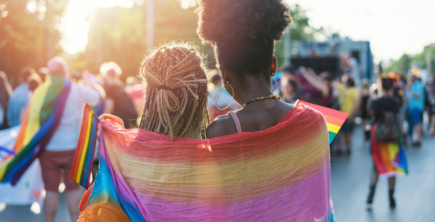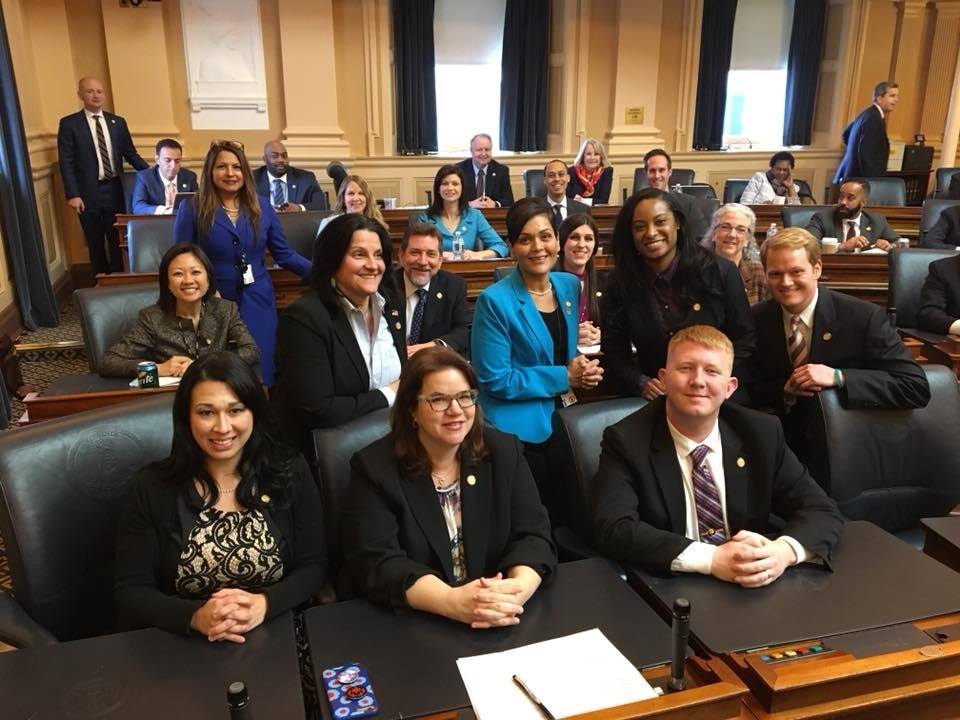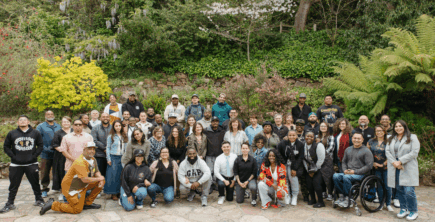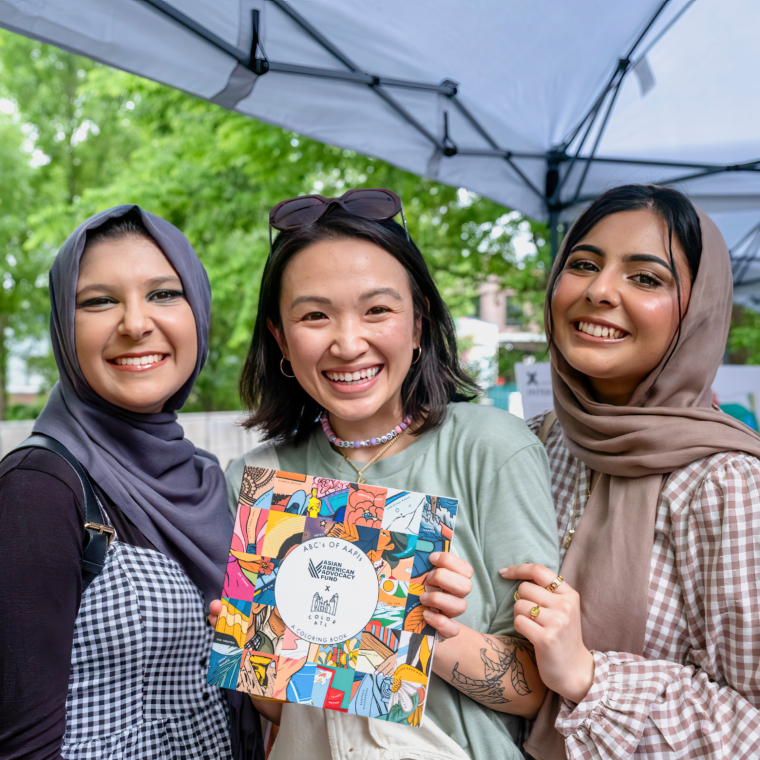
LGBT

Some of the newly elected members of the Virginia House of Delegates. Photo courtesy of Debra Rodman.
We all knew 2017 would be a long year. Any lingering hopes to the contrary evaporated in the first weeks of the Trump administration—from Sean Spicer’s fit about the size of his boss’s inauguration crowd to Trump’s actions to intimidate sanctuary jurisdictions and place an illegal ban on visitors from seven majority-Muslim countries.
Less foreseeable—and much more distressing—is some of what Trump’s rise has churned up and emboldened among our fellow citizens. As such, it is all the more important to appreciate the positive signs we have seen at the ballot boxes in 2017 as we look ahead to another challenging year. After watching hatred publically flaunted in Charlottesville in August, we are right to celebrate the victories of a remarkably diverse slate of candidates in Virginia’s statewide elections in November. After seeing civic leaders make excuses for an accused serial sex predator in Alabama, we have every reason to rejoice at the failure of his special-election bid to join the US Senate.
If you didn’t follow the elections of late 2017 closely, it was not only what happened in them, but also how it happened that was extraordinary. In Virginia, we saw a first glimpse of what a “blue wave” election might look like. Not only did Democrats sweep the statewide races for governor, lieutenant governor, and attorney general by unexpected margins in this “purple” state. They also flipped 15 seats in the state legislature, only failing to reach 50-50 parity in the state House due to a single disputed ballot, followed by drawing names for the legislative seat from a ceramic bowl.
Imagine what these communities could achieve with more serious outreach and national investment, and fair voting laws.
Really—it is crucial that we imagine it.
Most of the new lawmakers elected in Virginia were women, and included people of many underrepresented perspectives and life experiences. As I wrote in a research essay following the elections, their victories were possible largely thanks to spikes in turnout among young people, Latinxs, Asian Americans, and African Americans. Many of them casting ballots for the first time, these voters proved that this “New American Majority” can indeed surge as an electoral force—even in an “off” (non-presidential) year.
And in case there was any remaining doubt, December’s special election results in Alabama re-doubled the message. There an election pitting Trumpian nativist Roy Moore against Democrat Doug Jones yielded a decisive lesson about the power of voter mobilization in African American communities. Black voters turned out to the polls at a higher rate than whites, and ultimately accounted for more than half of (now Senator) Jones’s votes.
What is truly incredible is that this mobilization was mostly a homegrown effort, grounded in existing Black community and political organizations. African Americans turned out in huge numbers despite limited Democratic Party outreach, and while contending with voter suppression laws that disproportionately burden their communities. Imagine what these communities could achieve with more serious outreach and national investment, and fair voting laws.
Really—it is crucial that we imagine it.
The most important midterm elections of any of our lifetimes await us this November. As we work to support campaigns and candidates that match our values, we must not forget the many pressing threats across our country to a fundamental democratic right: the right to vote.
Not only must we remove existing structural biases that undermine voting rights; we must also take the next step of building affirmative structures of inclusion.
Tides is working on many levels and with myriad partners not only to strengthen efforts to roll back these threats, but also to advance an innovative framing and broader approach to the issue of voting rights. Together with the Haas Institute for a Fair and Inclusive Society—and grounded in our shared vision of equality, human rights, and social justice—we are committed to a paradigm shift: Not only must we remove existing structural biases that undermine voting rights; we must also take the next step of building affirmative structures of inclusion.
Concretely, this means supporting a suite of tactics and projects that support the full and effective exercise of voting rights. I will mention a few. First, Tides Foundation is proud to count among our grantees the Brennan Center for Justice—a leading force for research, strategy, and litigation across many fronts in the struggle to defend voting rights. In the past several years, few if any could claim to be doing more to bring threats to voting rights to the attention of the courts and the wider public than the Brennan Center.
Tides Foundation is also thrilled to support the work of the Florida Rights Restoration Coalition (FRRC) Education Fund, led by Desmond Meade. The FRRC Education Fund is a grassroots organization run by formerly incarcerated persons/returning citizens working to end disenfranchisement and discrimination against people with convictions, and to create a more comprehensive and human reentry system. Across the United States, more than 6 million citizens are forbidden from voting due to state laws that exclude people with past convictions. Around 1 in 4 of those lives in Florida. The FRRC Education Fund and its coalition partners just announced that this November, Floridians will have the opportunity to vote on a ballot initiative to restore voting rights to most of these disenfranchised citizens. The measure’s passage would be a monumental victory—uprooting one of the oldest legal means designed to suppress African American voting from its most significant remaining outpost.
At Tides and the Haas Institute, we also see all of our work to support political power-building at the community level, and especially with young people and communities of color, as voting rights work. Research consistently finds that these voter groups are the ones most affected by all forms of voter suppression. By bolstering civic-engagement projects and the social capital that underpin them in communities of color and among the young, we fight voter suppression by building knowledge, resilience, and advocacy capacity among voters contending with it directly. And investing in these capacities feeds a virtuous cycle: the demographic groups disproportionately targeted by voter suppression laws are wise enough not to elect candidates who support such anti-democratic measures.
Next month, Tides and the Haas Institute will release my latest publication, a brief assessing recent research on voter suppression. In it I flesh out some of the points above by showing what social-science studies teach us about the needed vision for structures of inclusion to ensure full, equal, and effective voting rights. Please watch for an announcement of the brief’s release at the end of February.

LGBT

Corporate Partners

Philanthropy

Read the stories and hear the voices of social change leaders fighting for justice.